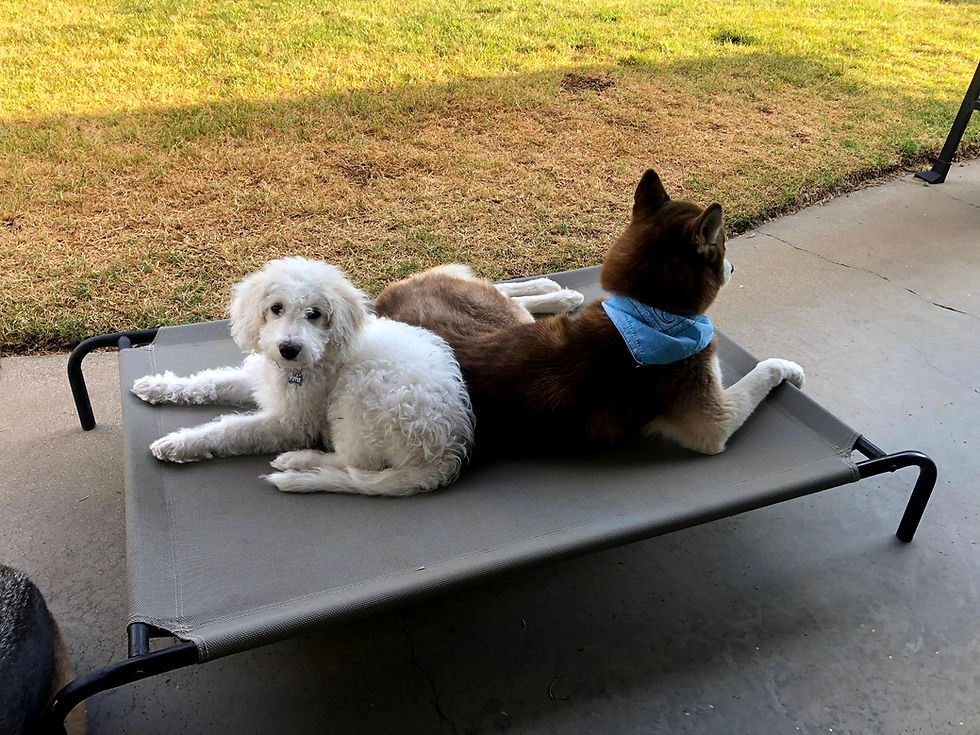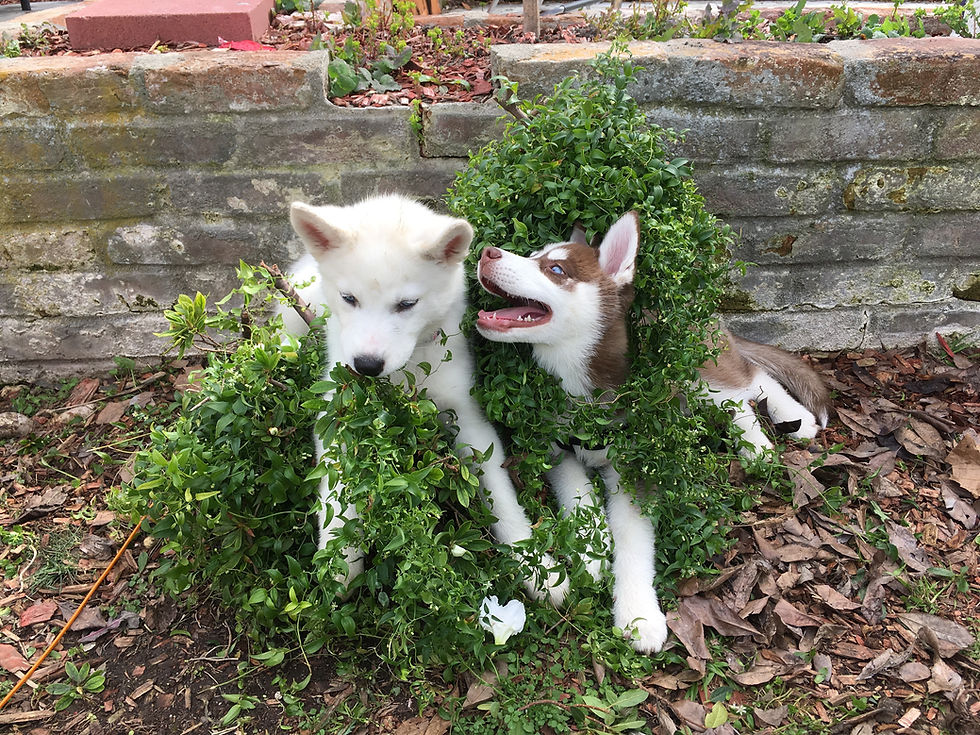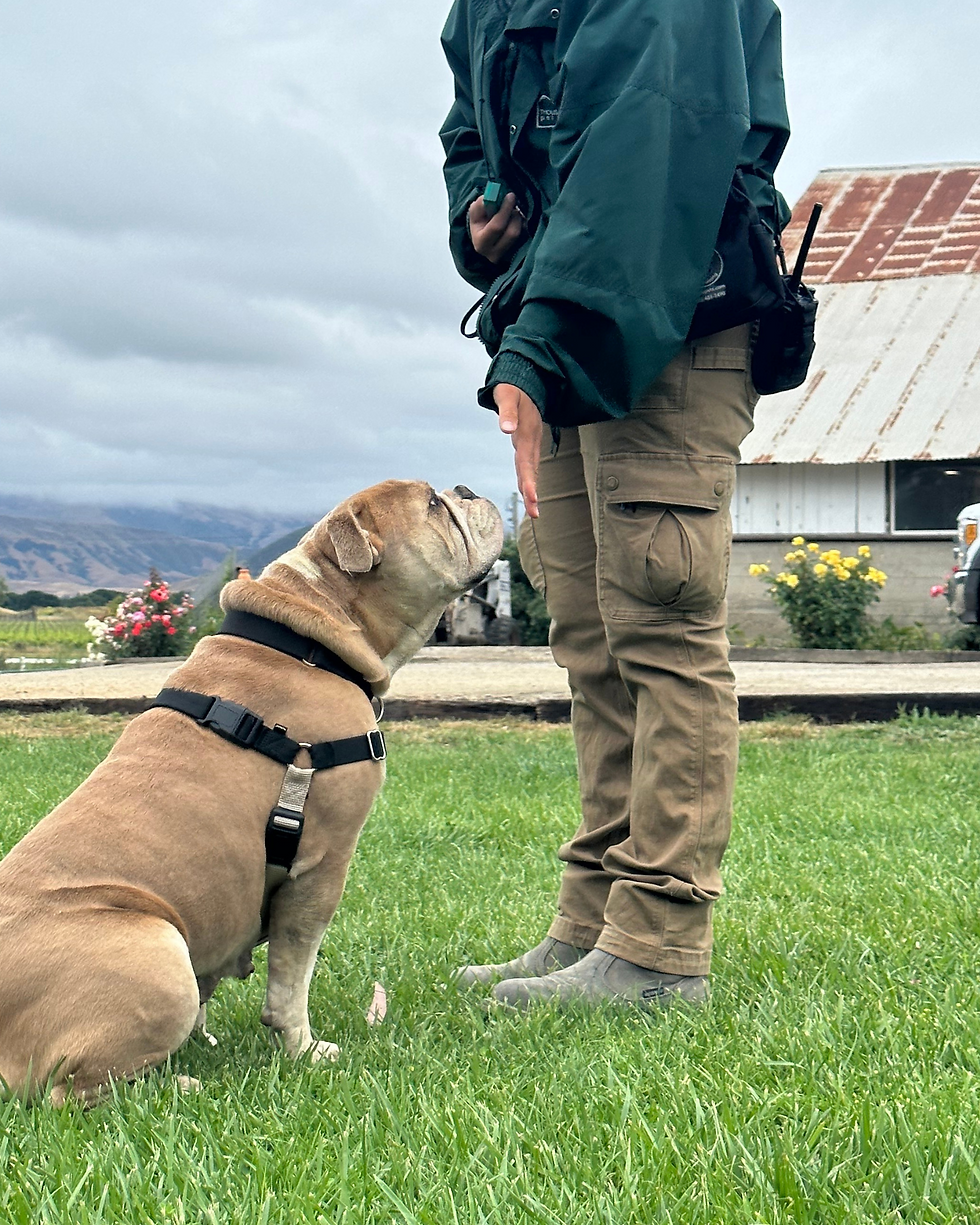Your New Puppy Playbook: 5 Key Questions Answered for First-Time Pawrents
- Maddie Angevine

- Aug 14, 2024
- 3 min read

Having a new puppy is one of the most exciting, exhausting, and sometimes downright confusing chapters of your life. You may get a flood of information from all kinds of sources that is hard to sort through, or you may find yourself with absolutely no idea where to start. Fear not! We are going to answer five of the most Googled questions that new “pawrents” need to know.
Q: At what age should I start training my puppy?
A: The short answer is: right away! Your puppy is already learning from their environment, and that includes you. While it’s important to keep your dog safe until they are fully vaccinated, there are some incredibly beneficial things you can do to set them up for a happy, healthy life. When you get your puppy, most commonly at or after they are 8 weeks old, they are in the midst of their socialization window, which starts at birth and closes around 16 weeks of age. The best thing you can do with a puppy in this period is to get them into a group puppy class! These classes are typically designed to be sanitized for unvaccinated little ones, and will help to form good feelings about other dogs and people. This is a key component in a well-adjusted dog, not just during the puppy stage, but for their whole lives.
Q: What is the first thing I should teach my puppy?
A: The most valuable cue to spend your time on with your new puppy is their name. While you may have thought long and hard about what you wanted to call them, they have absolutely no idea that certain human words should be important to them. Start by saying your dog’s name in a cheerful tone, and giving them a treat. Do this about 5-10 times in one session, and repeat a few times throughout the day. I still do this occasionally with my dogs that are no longer puppies, as it helps to maintain their ability to check in with me regardless of what they might be doing when I call them.
Q: Why won’t my puppy stop jumping on me?
A: Puppies jump for all kinds of reasons. Have you ever watched a puppy with an adult dog? They often jump up and lick their face, ears, and mouth. It can be rooted in excitement, but it is also often an appeasement tactic to show the more mature dog that they are just a baby, and not a threat. Additionally, all the “fun stuff” on humans is up high, specifically our faces and our hands. We can help redirect unwanted jumping by teaching our puppy an incompatible behavior. They cannot physically be jumping and sitting at the same time, so we can replace the undesired behavior with a preferred one. My personal preference is a “sit.” If our dogs learn that we like when they sit for a greeting, they can easily follow through!

Q: What’s the easiest way to potty train a puppy?
A: Create a routine. Dogs are creatures of habit, just like humans. This is one of the many reasons why we can live so well together. Give your puppy a chance to go potty outside once every hour, at minimum. Don’t wait for them to indicate that they have to go outside, because they don’t know how to do that yet! Make sure you are providing ample opportunity for them to be successful and create the routine that you want. Many people choose to utilize a crate or kennel in their potty training process. While they are not necessary, they can be incredibly helpful. You can find more potty training tips here.
Q: How do I get my puppy to stop biting me?
A: First thing’s first: canine biting is normal. Dogs use their mouths for a wide variety of things, including healthy play. What I really like to teach is called “bite inhibition,” where our dogs can learn to soften, and even avoid, any mouthing with humans. We are very sensitive in comparison to their puppy siblings! If they bite with any hard pressure, implement a high-pitched “yipe!” as if you are another dog, indicating that their bite hurts. If this does not work, stand up and walk away from your puppy. If the fun stops when they bite, they will learn over time to be more gentle in their play with you. Keep in mind, an overtired puppy is more likely to be a handful, just like an overtired toddler may resort to a tantrum. Make sure they have space and time set aside to take breaks when they may need them.
Have fun, and enjoy your new puppy!



